Dragon fruit fertilizer for fruiting plays a vital role in the health and productivity of red dragon fruit plants. Many new farmers assume that just applying fertilizer is enough, but the truth is deeper than that. It’s not just about adding nutrients—it’s about making sure your dragon fruit plant is actually absorbing them. Poor absorption means stunted growth, weak flowering, and low-quality fruit. Fertilization must be done based on the plant’s stage, the season, and soil condition.
If your plant is showing any signs dragon fruit fertilizer requirements of nutrient deficiency, you need to act fast. Let’s explore how to identify these signs and how to solve them effectively.
5 Signs Your Dragon Fruit Plant Needs Fertilizer for fruiting
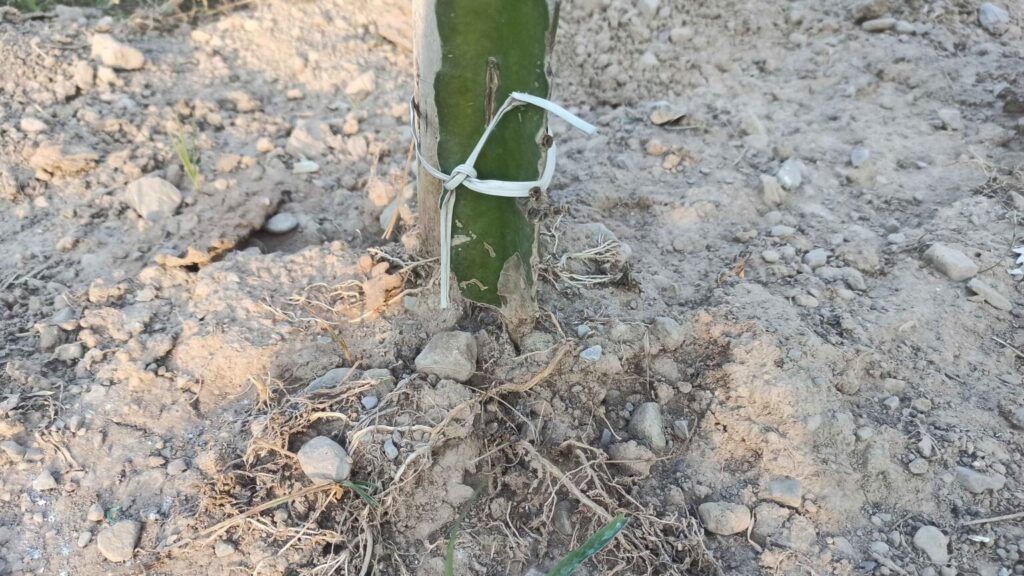
1. Roots Popping Out of Soil
One major sign of dragon fruit fertilizer for fruiting deficiency is the appearance of roots above the soil surface. Dragon fruit has a shallow root system, and when nutrients in the surrounding soil are exhausted, the plant begins to stretch its roots upwards in search of food.
- Cause: Poor nutrient availability or lack of organic matter in the soil.
- Effect: Roots become exposed, drying out and stressing the plant.
- Solution: Apply organic compost or a balanced NPK fertilizer and mulch around the base to retain moisture.
2. Slow or Stunted Growth
Dragon fruit is a fast-growing cactus, but if you notice that new shoots aren’t appearing or growth is sluggish, it’s likely due to insufficient nutrients.
- Cause: Lack of nitrogen or an overall imbalance of nutrients.
- Effect: Fewer buds and slow canopy expansion.
- Solution: Apply nitrogen-rich fertilizer during the growing phase and monitor progress every 2 weeks.
3. Drooping or Weak Branches
If some of your plant’s branches are thin, curved, or growing slower than others on the same post, it’s likely a root or nutrient competition issue, its time for dragon fruit fertilizer.
- Cause: Uneven nutrient absorption among plants sharing the same space.
- Effect: Uneven growth, where some stems thrive and others remain small.
- Solution: Check for root-bound plants and ensure every stem is getting equal feed through a drip or circle-feeding system.
4. Yellowing or Pale Pads
Yellowing isn’t always sunburn—it often signals micronutrient deficiencies such as iron, magnesium, or zinc.
- Cause: Micronutrient deficiencies or poor soil pH.
- Effect: Loss of chlorophyll leads to weak photosynthesis.
- Solution: Apply a foliar spray with micronutrients and adjust pH to around 6-7.
5. Low Fruit Yield or Poor-Quality Fruits
If the number of fruits per plant is low, or the fruits are small and lack color or sweetness, then your fertilizer regime needs attention.
- Cause: Phosphorus and potassium deficiency during flowering and fruiting stage.
- Effect: Weak flowering, poor fruit set, and unappealing fruits.
- Solution: Increase phosphorus and potassium during flowering and fruiting seasons.
Choosing the Right dragon fruit fertilizer
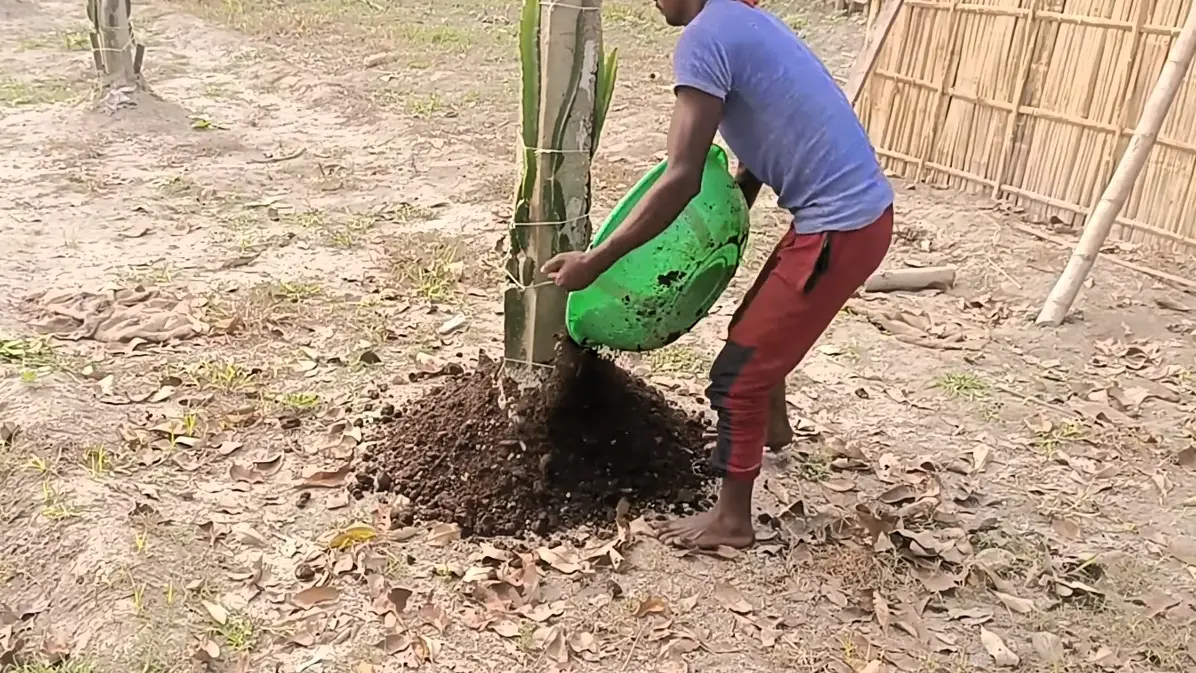
Dragon fruit fertilizer for fruiting 2 ways
Organic Fertilizer
Organic options like cow dung, vermicompost, and compost tea not only provide nutrients but also improve soil quality and microbial activity.
Benefits:
- Improves soil texture and structure.
- Sustained nutrient release.
- Environmentally friendly.
Application Tips:
- Mix into soil during bed preparation.
- Reapply every 3–4 months.
- Ideal before monsoon or flowering.
Synthetic Fertilizer
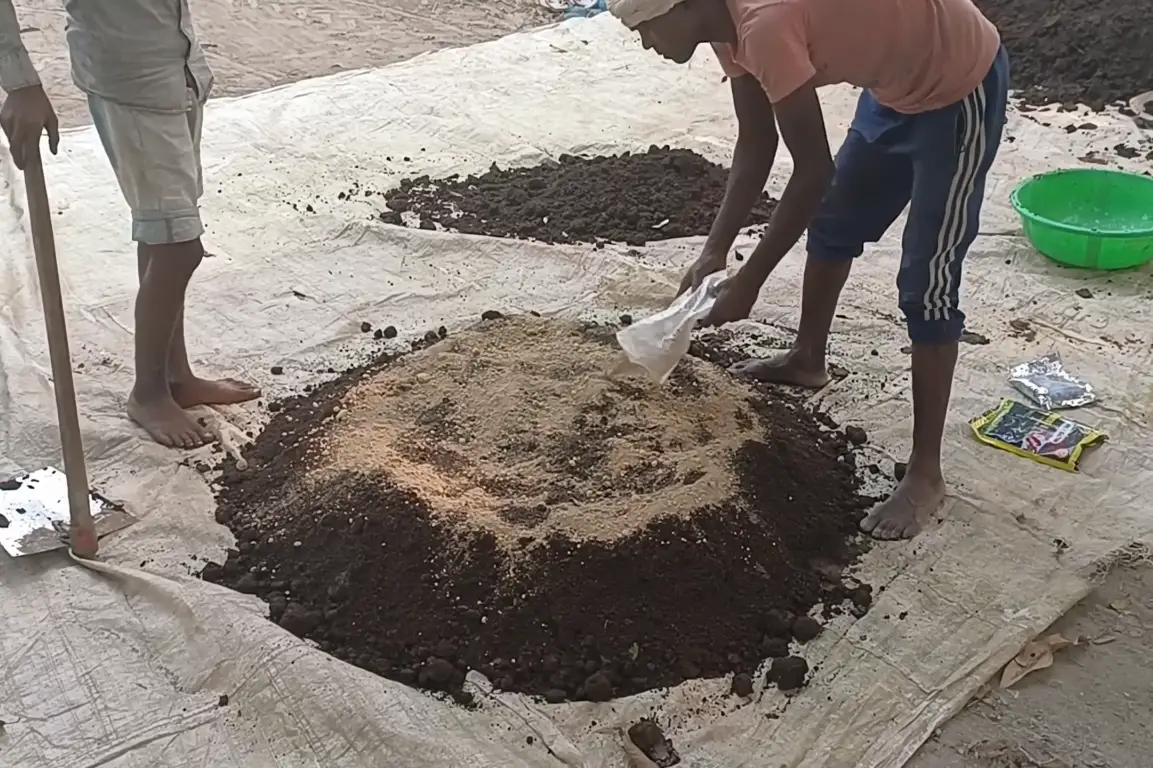
Chemical fertilizers are fast-acting and can give quick results when used properly.
Pros:
- Rapid nutrient delivery.
- Easy to measure and apply.
Cons:
- Can burn plants if overused.
- Reduces soil quality in the long term.
Tips for Use:
- Always follow label instructions.
- Apply 3–4 inches away from the stem.
- Water after application to help absorption.
Key Nutrients and Their Role
- Nitrogen (N): Leaf and stem development.
- Phosphorus (P): Root strength and flowering.
- Potassium (K): Improves fruit size, taste, and resistance.
- Calcium, Magnesium, Boron, Zinc: Needed in small but critical amounts.
- Humic Acid: Boosts root growth.
- Gibberellic Acid: Natural growth promoter.
Common Fertilizer Mistakes to Avoid
Over-Fertilizing
Symptoms:
- Burnt leaf tips.
- Stalled growth.
- White salt crust on soil.
Solution:
- Flush soil with water.
- Wait 2 weeks before applying any more fertilizer.
Dragon fruit fertilizer requirements: Using the Wrong Fertilizer
Some fertilizers are not suitable for cactus plants. Avoid high nitrogen feeds during flowering as they encourage leafy growth instead of blooms. do not waste time in thinking too much as it led to poor production as it need dragon fruit fertilizer for fruiting.
Tip: Test your soil’s pH and nutrient level once per year. Adjust fertilizer based on actual needs.
🌱 Tip of the Day: How to Make Homemade Organic Fertilizer for Dragon Fruit
If you’re a new farmer or a backyard gardener looking to boost your dragon fruit plant’s health naturally, here’s a trusted method:
Banana Peel & Eggshell Compost Tea
This is a calcium- and potassium-rich liquid fertilizer you can make at home.
What You Need:
- 2 banana peels
- 2 eggshells (crushed)
- 1 tbsp jaggery (gur)
- 1 liter water
Steps:
- Soak all ingredients in water inside a closed jar.
- Let it ferment for 5–7 days.
- Shake daily.
- After a week, dilute this mixture in 5 liters of water and apply it around the base of each plant.
Why This Works:
- dragon fruit fertilizer requirements – Banana peels add potassium and phosphorus.
- Eggshells release calcium slowly.
- Jaggery promotes microbial growth which improves nutrient uptake.
When to Use:
- Once every 3 weeks during the growing or flowering phase.
Pro Tip: You can mix this with a little seaweed extract (like Sagarika) for better results.
This natural tea not only boosts flowering and fruiting but also improves soil health over time.
FAQs
1. How often should I fertilize my dragon fruit?
Dragon fruit fertilizer for fruiting 3 to 4 times a year, depending on the plant’s age and the season. Younger plants may need more frequent feeding, especially during active growth phases. Always match the fertilizer type and quantity to the plant’s current needs. Overfeeding can harm the roots and slow down growth.
2. What’s the best fertilizer for dragon fruit?
The ideal fertilizer is a combination of organic compost and a balanced NPK fertilizer (such as 6-6-6 or 10-10-10). During flowering and fruiting, switch to higher phosphorus and potassium ratios. Adding micronutrients and humic acid also enhances the plant’s overall health and productivity.
3. Can I use homemade compost?
Yes, homemade compost is highly beneficial. It enriches the soil with organic matter and microbes. To boost its effect, mix with liquid bio-fertilizers or fermented compost tea. However, ensure it is fully decomposed before use to prevent root burn.
4. Why are my dragon fruit pads turning yellow?
Yellow pads often indicate a deficiency in nutrients like iron or magnesium, or sometimes root rot due to waterlogging. Another reason could be over-fertilizing or improper pH levels. Check soil drainage, test nutrient levels, and apply a micronutrient foliar spray if needed.
5. What’s the difference in fertilizer needs between pot and ground plants?
Pot-grown dragon fruit needs more frequent but lower doses of fertilizer due to limited soil volume. Nutrients leach faster in pots. Ground plants, on the other hand, can hold nutrients longer and benefit from slow-release fertilizers or deep composting.
6. What should I do if I over-fertilized my plant?
If you suspect over-fertilization, immediately flush the soil with plenty of clean water to dilute excess salts. Hold off on fertilizing for the next 2–3 weeks. Observe your plant for recovery signs like new shoots or greener pads before resuming feeding.
7. When should I apply phosphorus-rich fertilizer?
Apply phosphorus-rich fertilizer when the plant begins to bud or show signs of flowering. This typically happens during early summer or the beginning of the monsoon. It promotes better flower formation and supports fruit set.
8. How do I know my soil has a nutrient deficiency?
Besides visible signs like yellowing leaves, poor fruit development, or weak stems, a soil test is the most reliable method. Many local agricultural departments offer affordable testing. Based on results, you can adjust your fertilizer application accurately.
9. Can I use urea for dragon fruit?
Yes, urea can be used but with caution. It should only be applied in the early vegetative stage to promote fast leaf and stem growth. Overuse or using it during flowering/fruiting can cause excess vegetative growth and poor fruit set.
10. Should I mulch after fertilizing?
Yes, mulching is highly recommended. After applying fertilizer, mulch helps retain soil moisture, prevent nutrient leaching, and keep the soil temperature stable. Use dry leaves, straw, or composted organic material as mulch for best results.
Final Thoughts
Fertilizing dragon fruit is not just a task—it’s a commitment to understanding your plant’s needs and responding thoughtfully. Whether you use organic or synthetic methods, timing and consistency are key. Monitor your plants regularly, take notes, and always remember: a healthy dragon fruit plant is a result of attentive care and smart fertilization.
If you found this guide helpful, don’t forget to check out our other posts on irrigation, structure building, and pest control in dragon fruit farming.
If you have any question regarding dragon fruit fertilizer for fruiting do let me know in the comment section below.
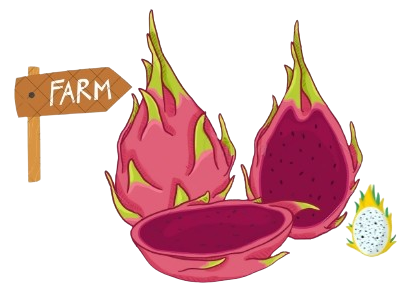
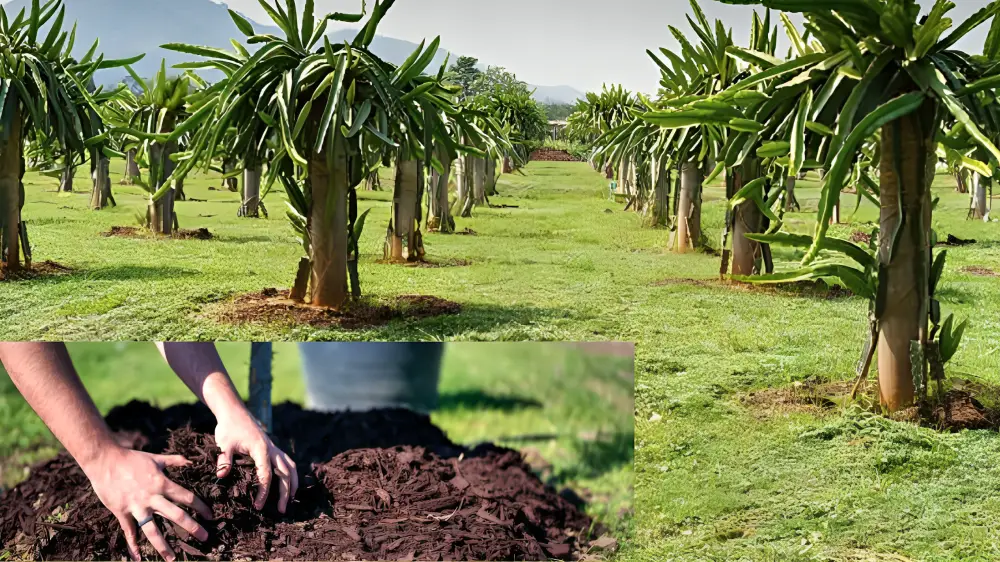
1 thought on “Powerful Dragon Fruit Fertilizer for Fruiting Results”